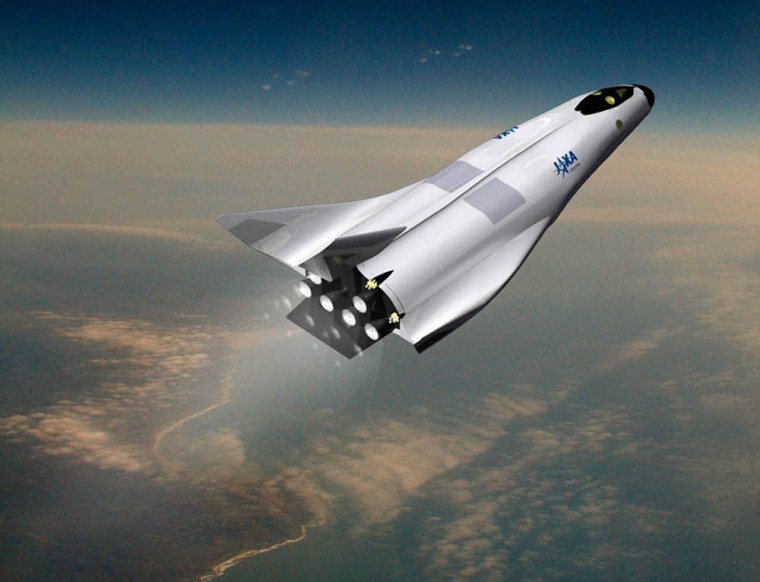Japan's space agency mapped out a new, ambitious plan for manned flights to the moon by 2025 as a first step to explore the solar system's far-flung planets, but said decisions about whether it would go it alone or collaborate with other nations won't be made for another decade.
The proposal unveiled Wednesday by Japan Aerospace Exploration Agency, or JAXA, marks the agency's first attempt in years to rethink its missions and rejuvenate a space program that has been hobbled by recent launchpad and space probe failures.
JAXA sent the plan to a government space panel for review, asking for a budget increase to roughly $2.6 billion a year, from $2 billion. By comparison, NASA's annual budget $16.2 billion.
"Until now, the question has been, 'Can Japan develop its own manned spaceship?' We will know the answer in another 10 years" when the agency will review its options, JAXA Chairman Keiji Tachikawa said. "It won't require a big budget rise," he said, adding that it's "too soon to know how it will cost because things might change in coming years."
Japan's long-term vision resembles those of President Bush and European space officials, who hope to land astronauts and robots on the moon as a first step to sending space shuttle missions to Mars.
Robotic surveys of moon
Over the next decade, JAXA's plan calls for scientists to develop robots and nanotechnology for surveys of the moon, and design a rocket and space vessel capable of carrying cargo and passengers. By 2015, JAXA will review whether it's ready to pour resources into manned space travel and possibly building a base on the moon. A decision to possibly to try for Mars and other planets would be made after 2025.
The plan emerges two months after JAXA sent a communications satellite into space aboard the country's workhorse H-2A rocket — its first successful launch since November 2003, when a rocket carrying two spy satellites malfunctioned after liftoff and was destroyed in midflight. That accident had forced officials to put the entire space program temporarily on hold.
It also marks a major policy shift that was set in motion last year when a Japanese government panel recommended that the agency focus on manned space flight instead of unmanned scientific probes.
Catching up
Despite being Asia's most advanced space-exploring nation, Japan has been playing catch-up to Europe in commercial satellite launches. Tokyo also has struggled to outdo China, which put its first astronaut into orbit in October 2003 and later announced plans for a trip to the moon.
Tachikawa said JAXA's plan wasn't a reaction to the recent string of failures that led to a 15-month grounding of the domestically made H-2A rocket.
JAXA will scrap several planned missions but hasn't publicly said which ones, the agency's executive director, Kiyoshi Higuchi, said. Missions will be reorganized so they aren't so cut off from other projects, as they have been until now, he added.
JAXA already has a moon survey mission planned. Its Selene probe — originally scheduled for launch in 2005 but since delayed — is designed to orbit the moon, releasing two small satellites that will measure the moon's magnetic and gravitational field and conduct other tests for clues about the moon's origin.
Lunar mining
JAXA officials said their hope is establish a base on the moon that could mine resources found on and under the lunar surface. An illustrated handout showed an astronaut directing an array of robots constructing the base, which would draw solar power from photovoltaic panels and explore the moon's poles for traces of water to convert to hydrogen fuel.
Eventually, JAXA hopes to expand missions to search for evidence about the origins of the universe and life beyond our planet, JAXA officials said.
Other aerospace projects include a passenger airliner that will travel at Mach 2 — or twice the speed of sound — for five-hour Tokyo-Los Angeles flights and an unmanned, hydrogen-fueled plane that can travel at Mach 5.
